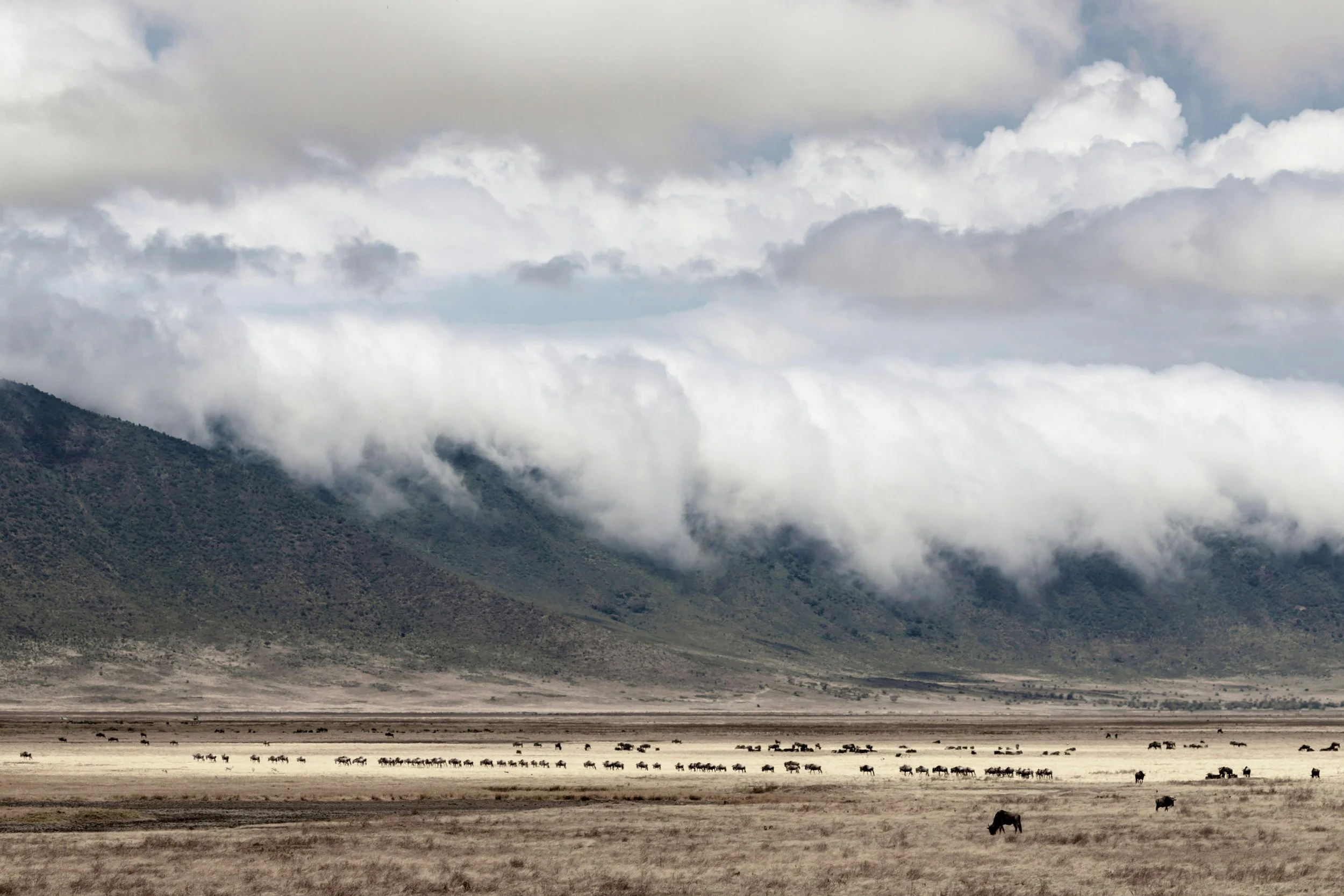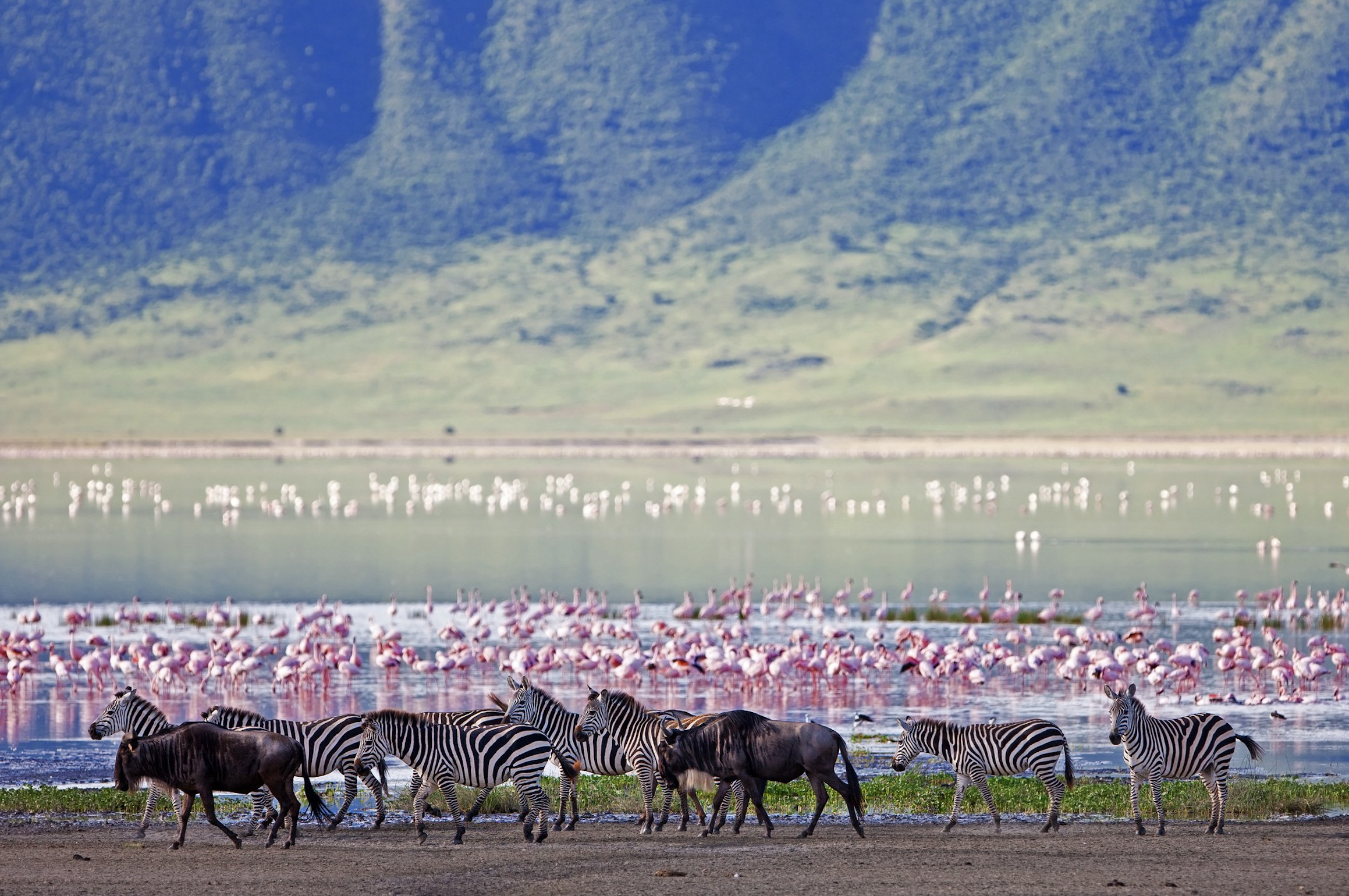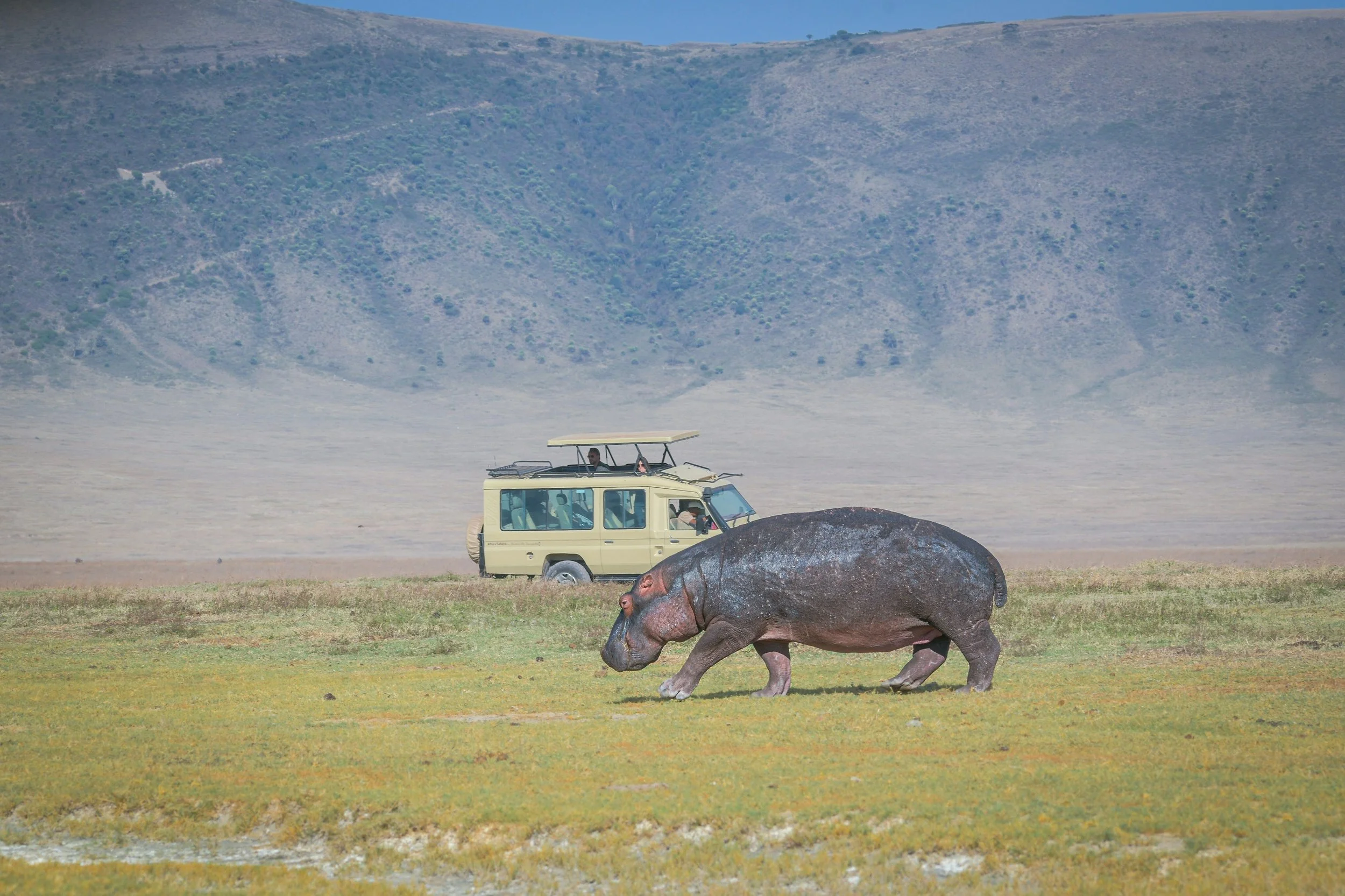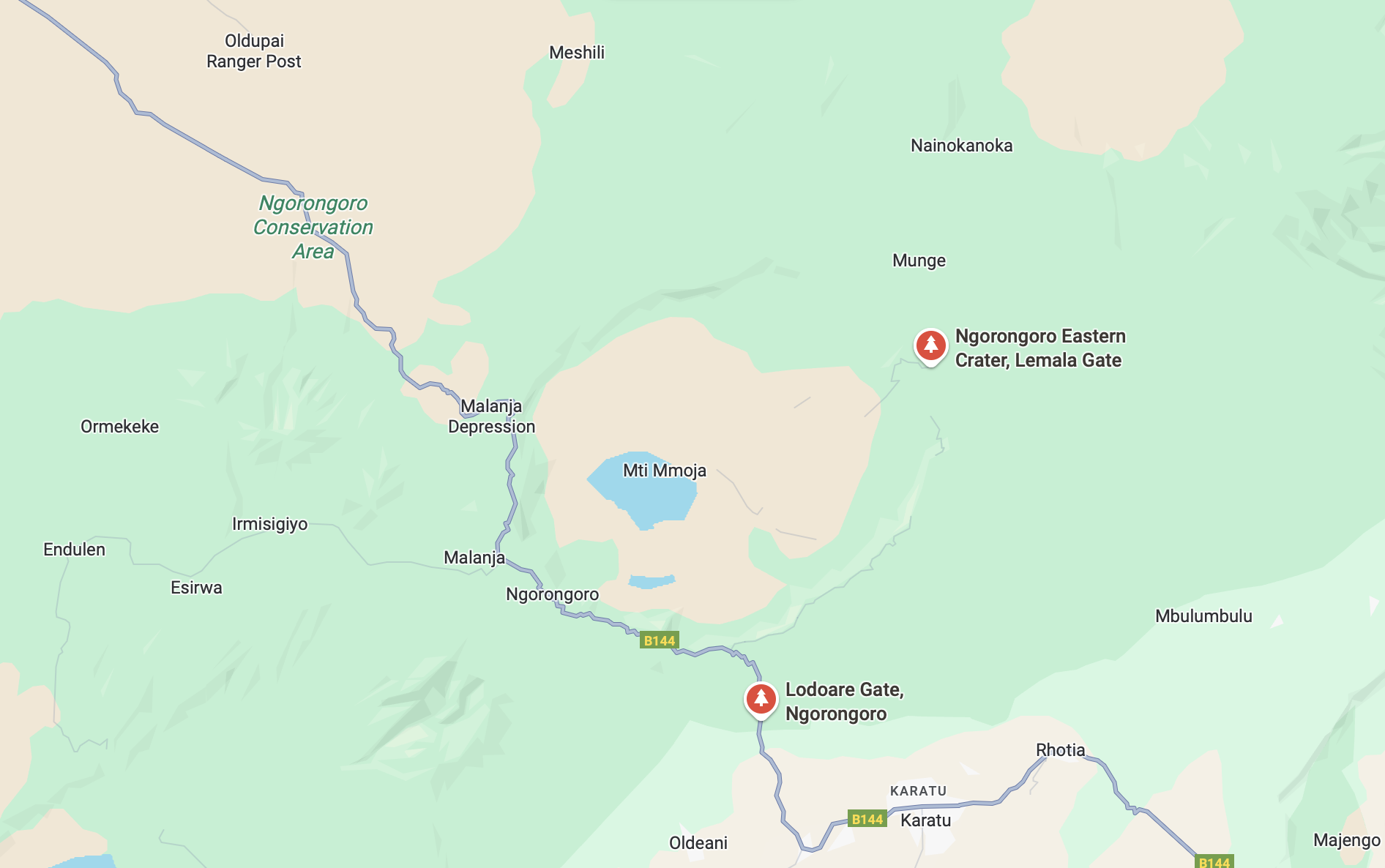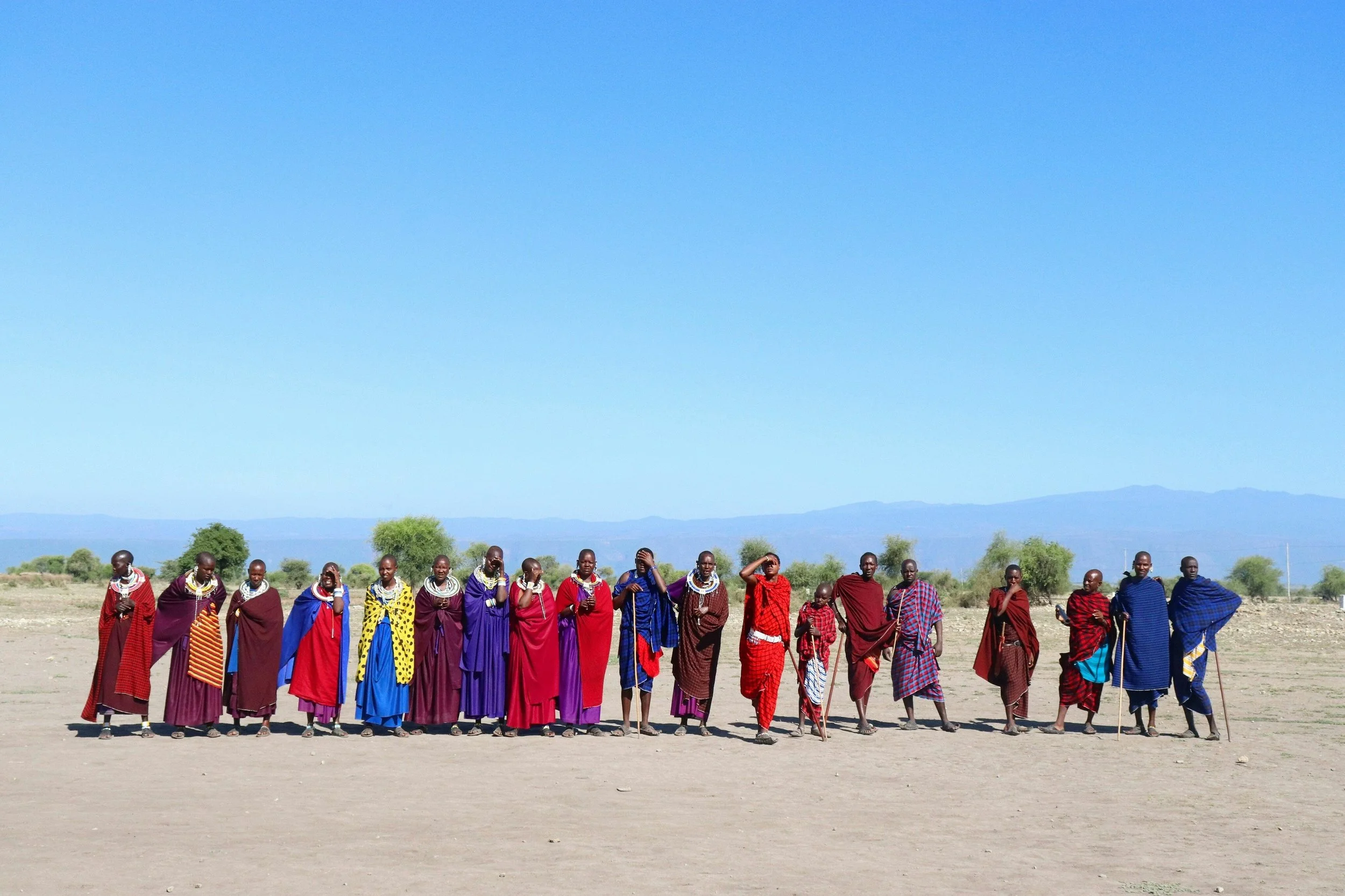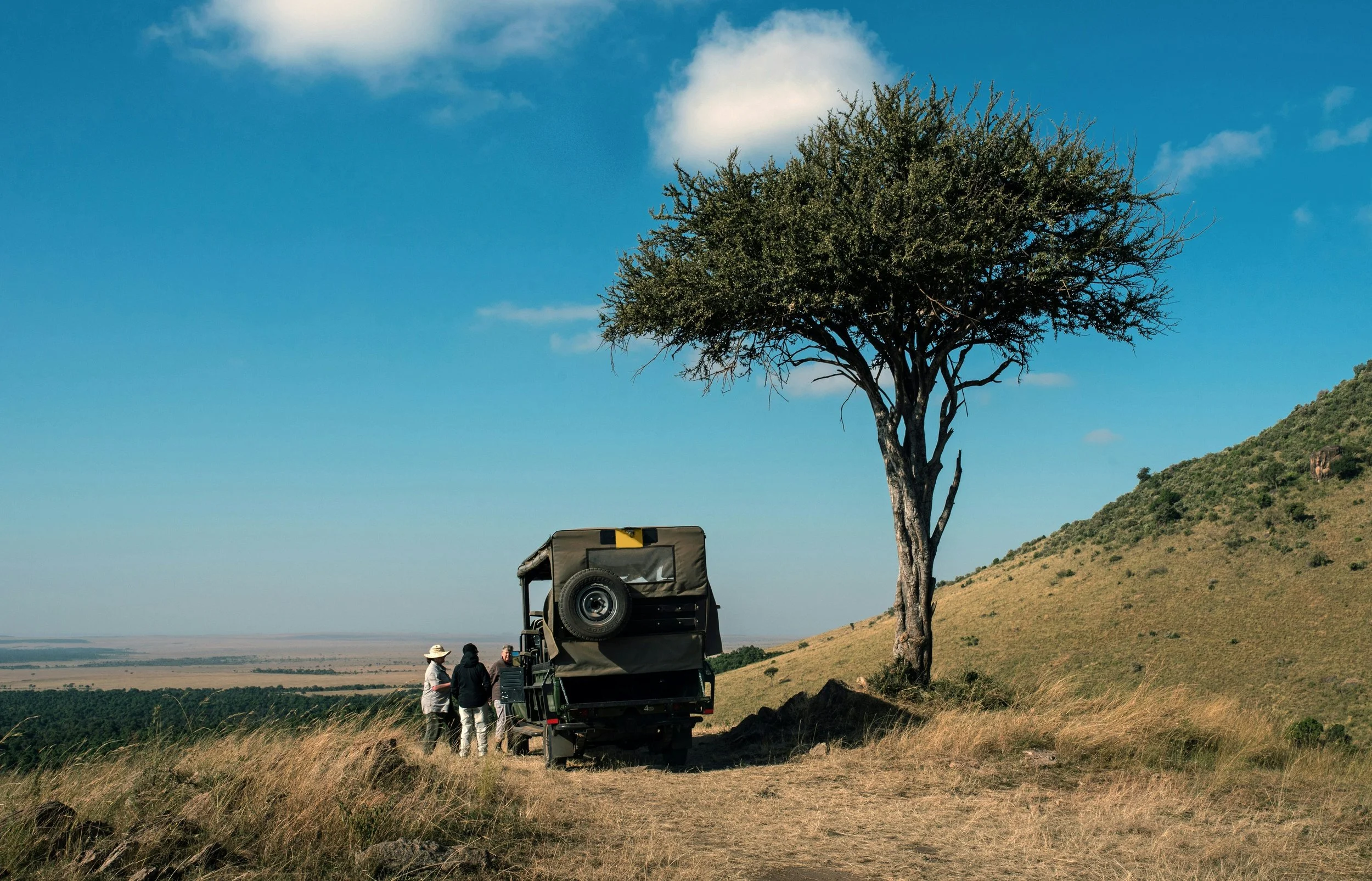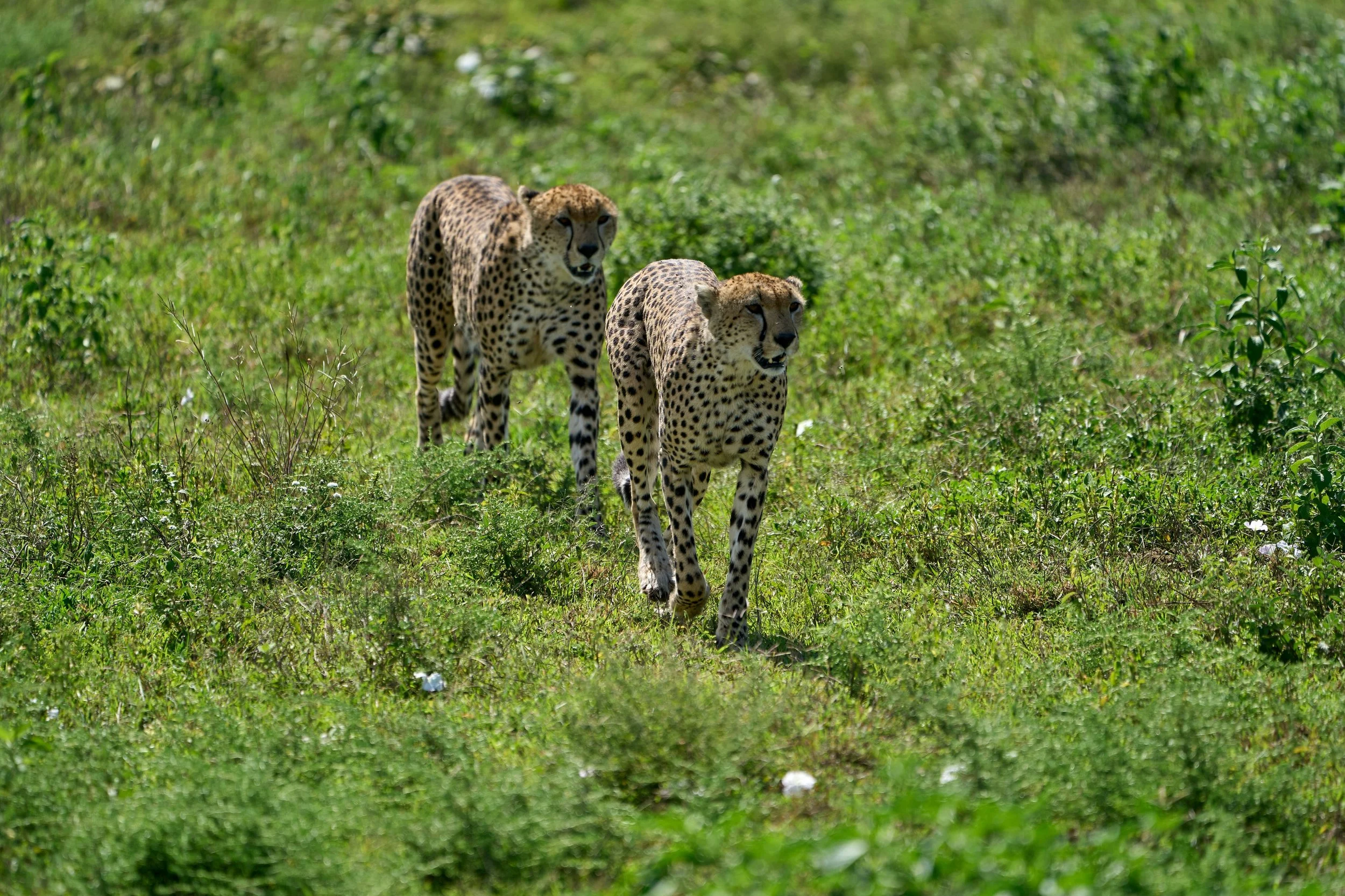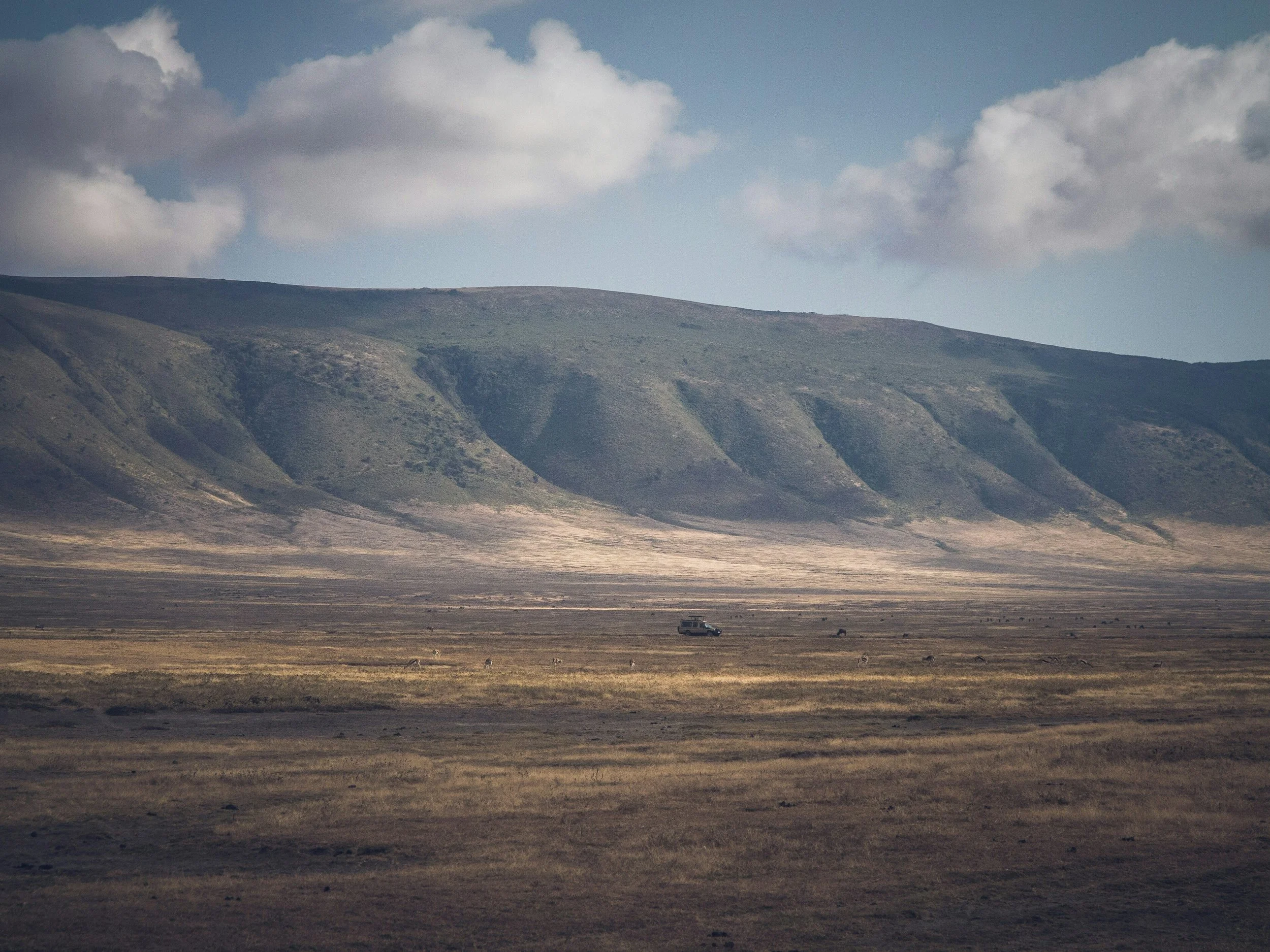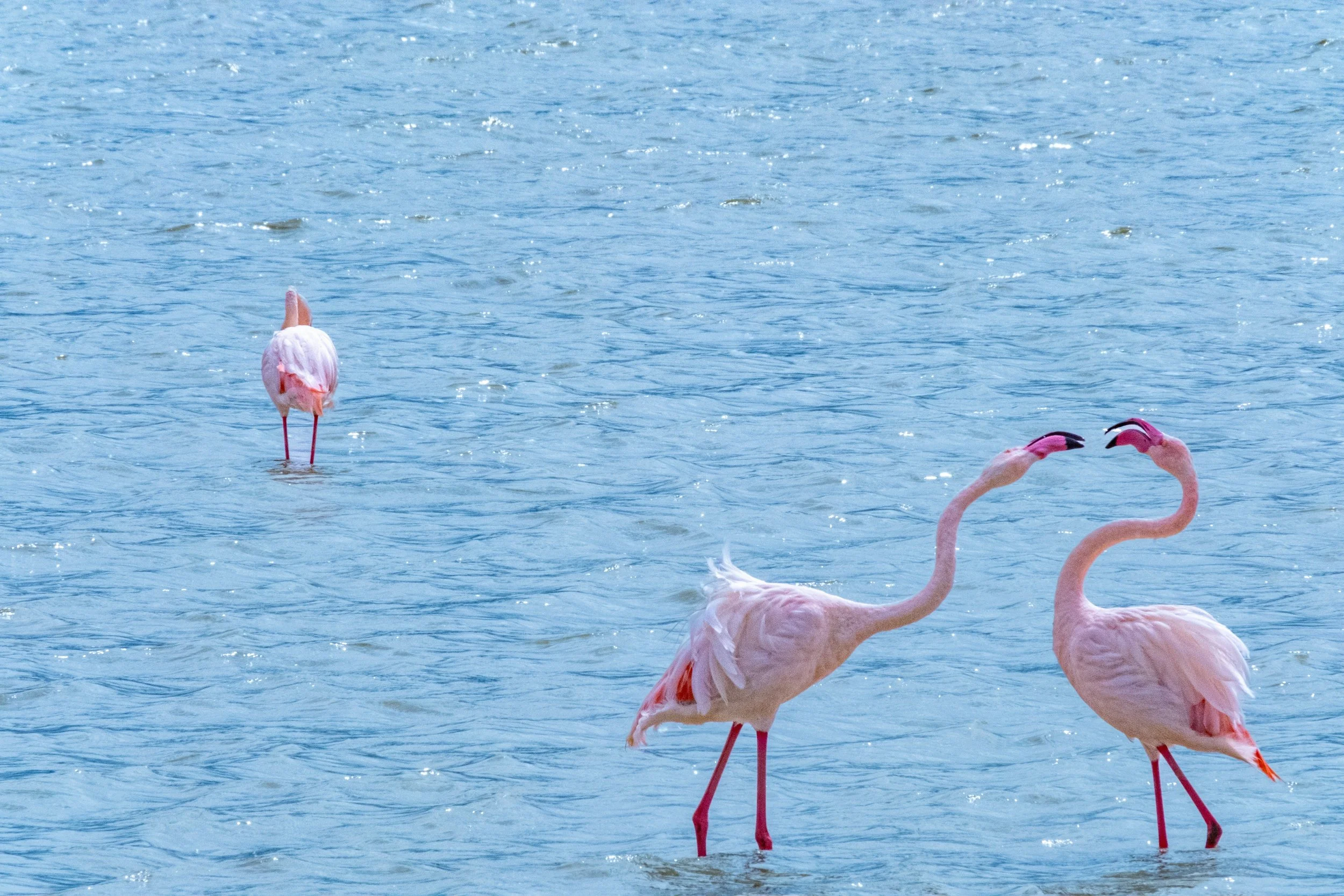NGORONGORO CRATER LOCATION: ALL YOU NEED TO KNOW
The towering walls of Ngorongoro Crater with clouds floating at the top of the rim whilst animals graze on the floor / Image: mariola-grobelska
Are you wondering where the Ngorongoro Crater location is? It’s situated right along Tanzania’s famous Northern Circuit route! Located in the northern part of the country, specifically west of Lake Manyara and Arusha, and southeast of the Serengeti National Park, it’s a must-visit destination for tourists from around the world. It’s often explored alongside other legendary Tanzanian parks such as Tarangire, the Serengeti, and Lake Manyara.
The crater lies within the larger Ngorongoro Conservation Area, a UNESCO World Heritage Site spanning over 3,000 square miles, which includes the Crater itself. This prestigious destination has been recognized for its rich ecological and biodiverse landscapes.
But its grandeur doesn't end there. The Ngorongoro Crater is also celebrated as one of Africa’s Seven Natural Wonders. It holds the title of the world’s largest intact volcanic caldera, formed over 2 million years ago. Measuring about 12 miles in diameter and descending roughly 2,000 feet from rim to floor, the Crater is teeming with wildlife, including all of the Big Five, which are protected under the Ngorongoro Conservation Area Ordinance.
The Crater is accessible to everyone around the world, though it does require some planning to reach it. Fortunately, we have created this essential guide to help you find its location, how to get there and why it's such a magnificent place to explore.
Magical 1-Day Ngorongoro Crater Tour
EXPERIENCE A SPECTACULAR TASTE OF TANZANIA IN OUR UNFORGETTABLE 1-DAY SAFARI EXPERIENCE WITHIN THE BREATHTAKING NGORONGORO CRATER.
A hippo saunters along the crater floor in front of a safari van filled with tourists watching its every move / Image: samwel-nsyuka
What is the location of the Ngorongoro Crater?
Simply put, the legendary Ngorongoro Crater is situated in Tanzania’s north, along the famed Northern Circuit route, and sits boldly within the greater Ngorongoro Conservation Area. Let’s delve a little deeper and look at the specifics of where the crater is exactly located.
The Ngorongoro Conservation Area is found in the broader Arusha region. It lies around 112 miles (180 km) west of the city of Arusha, which is known to be the gateway city for Ngorongoro Crater safaris and is an ideal place to start your safari adventure.
Aside from Arusha, there are a few more well-known parks that Ngorongoro Crater is relatively close to. The Serengeti is positioned northwest of the crater (around 60 to 80 km or 37 to 50 miles away), and Lake Manyara lies to the southeast (around 60 to 70 km or 37 to 43 miles away). So, as you can see, it's in a prime position to be enjoyed as part of the renowned Northern Safari Circuit.
The Ngorongoro Crater's geographic coordinates lie around 3.2° South latitude and 35.5° East longitude. You are probably interested about the actual significance of these and how they may facilitate your journey. Their purpose is there to identify the exact location of the crater on the earth.
The latitude coordinates show that the crater is situated only a few degrees south of the equator, which also indicates that the climate here is typically warm and sunny. The longitude coordinates show that it lies comfortably within the Eastern Hemisphere. The unique mixture of the crater’s location as well as its elevation plays a key part in its thriving environment and biodiversity conservation.
Where Is the Main Entry Point to Ngorongoro Crater?
The main entry point to Ngorongoro Crater is the Loduare Gate. The Loduare Gate is very close to the town of Karatu and is the main entry point to the Ngorongoro Conservation Area, which includes the crater. Once you pass through the gates, you will travel along a picturesque winding road through the Ngorongoro Conservation Area to the crater rim. Once you reach the rim, you will descend to the crater floor to start your Ngorongoro Crater safari. Loduare Gate is the gateway where park officials will charge entry fees and check passports and ID before you enter the crater.
Loduare Gate isn't the only entry point into the broader Ngorongoro Conservation Area; however, it is the most used. This is because it is the only entrance for visitors to enter the crater. Rules are much stricter in the Ngorongoro Crater in comparison to other national parks in Tanzania. Only registered tour operating vehicles are permitted to enter the crater floor, and self-driving visitors must be accompanied by a licensed guide. These strict rules are in place for three main reasons: to protect and conserve the crater's ecosystem, to ensure safe driving due to challenging terrain and conditions, as well as the lack of emergency support available within the crater.
The other gates that offer access into the greater Ngorongoro Conservation Area are Naabi Hill Gate which is closer to the Serengeti National Park or Lemuta Gate, situated on the northeastern rim of the crater - both of which provide access to different sides of the conservation area, but neither offer direct entry into the crater itself. Loduare Gate is the only entry point for visitors to enter the crater, so for anyone wishing to do a Ngorongoro Crater Safari, Loduare Gate is the gate you will be heading to.
Planning a visit? Here’s how to get to the Ngorongoro Crater
Planning a visit to the Ngorongoro Crater location is fairly easy. You can reach the crater from anywhere in the world. Wherever your starting point may be, you will need to fly into Tanzania. Even though you can opt to fly into any airport in Tanzania, the most ideal airports are Arusha Airport or Kilimanjaro Airport, which are the largest airports situated closest to the crater.
These airports are optimal for both international and domestic flights, with Kilimanjaro Airport being the preferred option for international arrivals. Both Kilimanjaro and Arusha Airports are favorites among travelers who wish to journey along the Northern Safari Circuit, as they are close to the group of national parks on that route, for example, Ngorongoro Crater, the Serengeti, Tarangire, and Lake Manyara.
From either airport, you can choose to fly to a smaller airstrip closer to the crater or drive directly to the crater. We’ve outlined all transportation options below to help you gain a better understanding of how best to visit and access the Ngorongoro Crater location, so you can be perfectly prepared for your next adventure to Tanzania!
A rhino, zebra and wildebeest pictured with the crater walls rising high in the background. You can see all of the Big Five throughout the Ngorongoro Crater location / Image: mwandwe-chileshe
How to get from Arusha to Ngorongoro Crater?
Getting from Arusha to the Ngorongoro Crater is a popular and well-traveled route. This is because most travelers start their safari in Arusha and begin with Ngorongoro Crater as one of the first parks to see on the Northern Circuit Route.
The most popular way to travel from Arusha to the crater is by a 4x4 safari vehicle. The trip takes around 3.5 to 4.5 hours (112 miles / 180 km) to get there, depending on traffic and road conditions. The most favored drive to get to the crater is to take the scenic route, which passes through the villages of Karatu and Mto wa Mbu - both of which are also great locations to start your Northern Circuit Safari if you prefer to stay elsewhere other than Arusha. This drive offers beautiful views of Tanzania’s countryside, glimpses of the Great Rift Valley Escarpment, as well as Lake Manyara. Karatu and Mto wa Mbu are also wonderful stops to visit on your route to Ngorongoro Crater if you have the time.
If driving to the crater is too lengthy, charter and domestic flights are also available for a quicker experience. A 25-minute flight from Arusha Airport to Lake Manyara Airstrip will get you to the southeast of the crater, where you will only need to drive 1 hour 10 minutes (46 miles / 74 km) to get to the crater itself. Alternatively, you can fly from Arusha Airport directly to Ngorongoro Airstrip, which is a 45-minute flight, and lands right by the Ngorongoro Conservation Area Headquarters, with only a 20-minute car drive to the crater floor to readily start your safari. However, flights to the Ngorongoro Airstrip are less favored because of repeated cloud cover, which means there are no scheduled domestic flights that fly here, only private charter flights. Most people opt to fly to Lake Manyara Airstrip instead, as it has regular domestic flights and offers a particularly scenic drive through the Ngorongoro Conservation Area, which can be particularly breathtaking.
There are no public buses or trains that go to Ngorongoro Crater, so most people choose to book with a safari company. It's good to know that access to the crater floor is regulated by the park's officials, and you can only enter with a licensed guide and/or vehicle, hence why booking with a Ngorongoro Crater Tanzania safari package with a reputable tour operator is your best bet. There are many upsides to having your own safari guide - they will have extensive knowledge of the crater to share with you, get you there comfortably, have insider insights to know where the animals are, as well as take you to the most breathtaking regions for you to enjoy.
How to get from Kilimanjaro to Ngorongoro Crater?
Journeying from Kilimanjaro to Ngorongoro Crater is a common route that a lot of tourists opt to take. Similar to the Arusha / Ngorongoro Crater path, you can choose to travel by land or air. Kilimanjaro is a little further away than Arusha is to the crater, so driving time usually takes around 5.5 to 6.5 hours (260–280 km / 160–175 miles), however the highlight of the drive is that you will generally get to witness the mountainous Ngorongoro Highlands that lie within the greater Ngorongoro Conservation Area.
Both Lake Manyara and Tarangire National Park are en route from Kilimanjaro to the Ngorongoro Crater location, and both make fantastic opportunities to visit. These two parks will break up the long drive as well as offer the experience of encountering two more stunning parks that sit along the Northern Safari Circuit.
Alternatively, if you prefer a quicker journey to the crater, you can take a domestic flight from Kilimanjaro Airport (JRO) to Lake Manyara Airstrip, which takes around 45 minutes. The good news is that there are regular flights that depart from Kilimanjaro that take you to Lake Manyara Airstrip, from there you will only need a 1.5 or 2-hour drive to the crater's rim.
Much like Arusha, domestic charter flights are available to get to Ngorongoro Airstrip, but because of the regular cloud coverage that lingers over the crater, availability of flights is limited, making this flight path much less used.
How to get from Zanzibar to Ngorongoro Crater?
Traveling from Zanzibar to Ngorongoro Crater is another favored route among many travelers. This particular route is longer, but it is doable within a day. The journey includes a plane ride, as driving the entire way, approximately 14 to 16 hours, is too lengthy.
Unfortunately, there are no direct flights from Zanzibar Airport (ZNZ) to the crater. However, you can fly directly to Arusha Airport (ARK) or alternatively to Kilimanjaro Airport (JRO). Once you land, a car journey or a domestic or charter flight is required to reach the crater.
Flights from Zanzibar to either Arusha or Kilimanjaro Airports take approximately 1 to 1.5 hours and operate daily via local airlines such as Coastal Aviation, Precision Air, or Auric Air.
From either airport, travelers typically drive in a 4x4 safari vehicle to get to the Ngorongoro Conservation Area before reaching the crater.
If you want to avoid the long drive, flights are also available to Lake Manyara Airstrip and Ndutu Airstrip from both Arusha and Kilimanjaro Airports. However, flight times and frequency vary between the two airports, so it’s best to research availability before booking.
The journey from the white sandy beaches of Zanzibar to the enriching landscapes of the crater may take a little while, but it is usually smooth and straightforward. Most tourists choose to book with a tour operator like BornWild, as we take care of your journey, transfers, hotel or lodge accommodations, entry fees, and permits, ensuring a stress-free experience to the crater.
How to get from Nairobi to Ngorongoro Crater?
You can reach the Ngorongoro Crater location easily from Nairobi in Kenya. It's a well traveled route in east Africa, because Nairobi’s Jomo Kenyatta Airport is well connected, making it very easy to access from many parts of the world.
There are two main transport options to get from Nairobi to the crater and that is to either drive or take a plane ride.
Driving from Nairobi to Tanzania can be inexpensive. There are many reliable shuttle bus services you can book which take you from Nairobi to Arusha. The drive normally takes around 8 hours and costs around $30 per person per way. During this drive you will be crossing the Namanga border from Kenya to Tanzania and witnessing an array of changing landscapes which can be particularly interesting. Once you get to Arusha, the shuttle service will drop you off at your Ngorongoro Crater lodge. It's recommended to stay overnight before embarking on the second leg of your journey to Ngorongoro Crater, as the complete drive is particularly lengthy.
From Arusha to Ngorongoro Crater - follow our guidelines above to get there by car. We recommend starting early in the morning to drive to the crater so that you can spend as much time on your Ngorongoro Crater safari as possible.
For a faster option, you can opt to fly from Nairobi’s Wilson or Jomo Kenyatta Airport directly to Arusha or Kilimanjaro in Tanzania.
There are regional flights you can book that fly from Wilson Airport directly to Arusha Airport, such as HOP! or Flightlink airlines. Fares typically start at around $135 one way.
From Jomo Kenyatta Airport you can fly directly to Kilimanjaro Airport in Tanzania with Kenya Airways, Precision Air or Air Tanzania. Fares can be anywhere from $139 to $300 for a one way ticket. Both flights take around one hour.
Once you arrive in Arusha or Kilimanjaro, you can opt to stay overnight or continue your journey on a short charter flight to the Manyara Airstrip. Additional flight information is above.
Maasai people commonly found in Karatu. Karatu is a vibrant and friendly town that sits on the doorstep of Ngorongoro Crater location / Image: sofia-zubiria
What are the closest airports to Ngorongoro Crater?
There are five airports that will connect you conveniently to the Ngorongoro Crater location.
Below, we have highlighted the airports in sequence from nearest to furthest away to help you decipher which airport or airstrip is the best for you.
1. Ngorongoro Crater Airstrip
Distance to the crater: 1.8 miles / 3 km
Drive time: 20 minutes
Notes: Closest airstrip to Ngorongoro Crater and only available for private charter flights - there are no scheduled domestic flights that fly here.
2. Lake Manyara Airstrip
Distance to the crater: 37 miles / 60 km
Drive time: 1.5 - 2 hours
Notes: Lake Manyara Airstrip is the second closest airstrip to fly to in order to get to the Ngorongoro Crater location. There are plenty of scheduled domestic flights that operate all year round.
3. Lake Ndutu Airstrip
Distance to the crater: 55 miles / 85 km
Drive time: 2 - 3 hours
Notes: Ndutu is located within the greater Ngorongoro Conservation Area and is an ideal airstrip to fly into if you are also visiting the Serengeti ecosystem.
4. Arusha Airport
Distance to the crater: 112 miles / 180 km
Drive time: 3.5 - 4.5 hours
Notes: Arusha is renowned for its reliable domestic flight connections within Tanzania.
5. Kilimanjaro International Airport
Distance to the crater: 170 miles / 270 km
Drive time: 6 - 6.5 hours
Notes: The main international airport hub in Northern Tanzania. From here, you can get to the crater by air or by land.
TAILOR-MADE SAFARIS, DESIGNED JUST FOR YOU
From the sweeping plains of the Serengeti to the magnificent amphitheatre of Ngorongoro Crater - whatever your budget, dreams or wishlist - we’ll create your perfect Tanzania adventure.
What is so special about the Ngorongoro Crater?
Ngorongoro Crater is one of Tanzania's most famous attractions - it’s special for two reasons. The first is that it’s one of the world's natural wonders, and the second is that it’s the world's largest inactive, intact and unfilled volcanic caldera.
Let’s talk about the Ngorongoro Crater size so you can get an idea of how big it is. With a diameter of about 12 miles (19 km) and an elevation of about 600 meters from the crater floor to the rim, the crater is shaped like a sunken volcanic bowl. This bowl-shaped natural enclosure creates a self-contained ecosystem that isn’t found anywhere else in the world. The unique environment within the basin plays an important role in supporting the rich biodiversity for which the crater is famous.
In simple terms, the craters' enclosed environment and circulating climate contribute to its fertile landscapes, from wetlands, savanna woodlands to grasslands. These regions, along with permanent water sources, support and sustain a high concentration of species of wildlife all year round.
The number of wildlife species that inhabit this region is impressive. Surprisingly, more than 25,000 large animals live within the Ngorongoro Crater park. Your chances of seeing the Big Five (which includes lions, buffalo, elephants, leopards, and the critically endangered black rhino) are high, along with spotting around 500 bird species, many of which are easily viewed at Lake Magadi.
Because of the large number of animals within this enclosed protected area managed by the Ngorongoro Conservation Area Authority (NCAA), you'll have an excellent opportunity to see a wide variety of wildlife. This is why our Ngorongoro Crater 1-Day Tour is so popular. The weather is also fantastic year-round, with mild and sunny temperatures that add to the crater’s appeal.
Even though the crater’s towering walls prevent most animals from venturing outside this contained environment, the species that inhabit the crater enjoy a thriving existence.
The Ngorongoro region is drenched in rich and fascinating history, from how the crater was formed to how the crater's location was where some of the earliest evidence of human fossilized bones was found by scientists. You can learn more about this at the Olduvai Gorge Museum, which is located within the Ngorongoro Conservation Area.
The final reason why the Ngorongoro Crater is so special is its naturally impressive beauty. No matter how you view the crater, whether from the rim or from the floor with its towering walls surrounding you, it is simply breathtaking. The combination of exceptional game viewing, rich history, and stunning scenery makes the Ngorongoro Crater one of the most coveted safari destinations in Tanzania.
Three elephants amble along the crater floor. Most animals that live within the crater walls are happy enough that they never want to leave / Image: matthew-spiteri
What is the closest city to the Ngorongoro Crater?
The closest city to the Ngorongoro Crater is Arusha, which is situated around 112 miles away (or 180 km). The city of Arusha is a great starting point for any Northern Circuit Safari, but also an ideal starting point for the Crater too.
However, whilst Arusha is the closest city, there are smaller towns that are much closer to the Ngorongoro Crater location.
The town of Karatu is only 12 miles (20 km) away from the entrance of Ngorongoro Crater - Loduare Gate. Karatu is a popular spot amongst travelers due to its proximity to the crater, as it sits right on its doorstep. It is a wonderfully enriching region offering peaceful surroundings, scenic views, affordable lodging,s and a cooler climate.
Mto wa Mbu is the second nearest village, located approximately 43 miles away (70 km) from the Ngorongoro Crater. Known for its beauty, rich culture, and 120 tribes living within the region, the town offers incredible local food experiences, picturesque cycling routes, and a relaxing atmosphere, all while boasting authentic Tanzania charm and serving as a key destination along the Northern Safari Circuit.
Though both these villages are much closer, Arusha remains the best gateway city for people far and wide traveling to the Ngorongoro region.
How big is Ngorongoro Crater?
The Ngorongoro Crater's size is truly impressive. This expansive, unbroken volcanic caldera spans between 10 and 12 miles (16 km and 19 km) in width from rim to rim. The crater floor stretches across an area of about 102 miles ( 264 square km) - this is why it is known as the world's largest caldera. The crater walls are lofty and steep and reach heights of anywhere between 400 and 600 meters (1,300 - 2,000 feet) above the crater floor, forming a natural sanctuary.
The elevation of the Craters basin is around 1,800 meters (5,900 ft) above sea level. The Ngorongoro Crater's size is not just expansive but also deep.
You might be wondering if animals can actually escape the crater walls, being so steep? They can, but with difficulty. The crater is not fenced or enclosed, so animals can roam in and out of it at free will; however, the walls are covered with dense forest as well as being very high. Some animals like elephants, lions, and buffalo wander in and out of the crater with curiosity. Although, because of the towering terrain and the fact that the crater offers plenty of food, water, and rich grazing, most animals choose not to leave and stay contentedly within the confines of the crater walls. Additionally, an interesting fact about the crater is that giraffes do not live here due to the steep crater walls and because the crater is unsuitable for their habitat.
Taking into account the towering walls and the overall Ngorongoro Crater, how do vehicles make their way down to the crater floor for a safari? There are two designated roads that wind down the crater's lofty walls. One road to get into the crater and one to get out of the crater. The Seneto Descent Road is there to enter the crater, and the one-way Lemala Ascent Road is used to exit the crater. These roads are known to be pretty steep and narrow, hence them being only one-way roads - they are also unpaved, meaning that careful driving is essential. Hence why only registered tour operators and 4x4 safari jeeps are allowed to drive into the crater. The two roads are there to ensure minimal impact on the crater's environment.
Two agile cheetahs roam the short grass plains of the crater looking out into the distance / Image: dmitrii-zhodzishskii
More About The Ngorongoro Crater Elevation
The Ngorongoro Crater elevation is one of the most interesting features about this natural wonder.
Elevation indicates the height of a point above sea level, which means the elevation of the Ngorongoro Crater’s rim is around 2,200 - 2,400 meters (7,200 to 7,900 ft) above sea level. And the crater floor is approximately 600 meters (2,000 ft) below that.
The unique contrast in elevation creates the dramatic landscapes that you see within the craters' enclosed bowl-shaped space. Because of the high walls, there is a significant difference in climate that you experience from the rim to the floor. The high elevation of the crater's rim results in cooler temperatures, cloudier conditions, as well as more rainfall. Whilst the crater floor receives warmer, more moderate temperatures all year round.
Because of the differences in altitude and climate, the craters' shape can support a varied range of thriving ecosystems. The variants of elevation influence animals, vegetation, and weather conditions, making the Ngorongoro Crater one of the richest biodiverse environments in the whole of the African continent.
History of Ngorongoro Crater
The Ngorongoro Craters’ history is not only fascinating, interesting but rather lengthy, as its story began two to three million years ago. The crater was famously created through a huge volcano that erupted in Northern Tanzania, which then collapsed in on itself. This collapsed bowl-like shape formed the crater that we see today.
Over the course of many years, the crater blossomed and filled with forests, lakes, streams, and grasslands, creating a rich self-contained ecosystem that attracts and inhabits thousands of wildlife species as well as winged species, making it a haven for both animals and birds.
The Ngorongoro Conservation area is also famous for its human evolution history. The Olduvai Gorge which is located in the greater Ngorongoro Conservation area, is a well known archaeological site where scientists discovered some of the first human remains. The discoveries at the Olduvai Gorge have contributed to vital information into early human evolution, gaining the nickname “The Cradle of Mankind”.
The legendary Maasai Tribe has lived within the Ngorongoro Crater location for hundreds of years, and when the Ngorongoro Conservation Area was created in 1959, it was planned to preserve the wildlife species, protect the region's thriving biodiversity, as well as continue the traditional way of life of the Maasai people.
The Ngorongoro Crater is a UNESCO World Heritage Site, renowned for its natural beauty as well as its rich variety of wildlife species. It is also marked as having a profound link to human history and culture. The Ngorongoro Crater remains one of the only World Heritage Sites that offers such an extraordinary experience, coupled with stunning scenery where both nature and history connect in a special way.
What Does Ngorongoro Mean?
Deriving from the Maasai language, the word Ngorongoro comes from the bell wrapped around a cow’s neck that leads the herd. It allowed cattle herders to know where their cows were and how fast they were moving, helping them monitor the herd. As the cows moved, the sound of 'ngor, ngor' could be heard, and this is how the local Maasai came up with the name Ngorongoro.
The Maasai People of Ngorongoro & How They Live in Harmony with Wildlife
The Maasai people have lived within the larger Ngorongoro Crater location for centuries and are known as one of the most famous tribes in east Africa. Their traditional way of life has great importance to the environment and area. Here, they practice traditional livestock grazing, cultural values and meaningful spiritual connections to its lands. These practices have influenced how the lands are utilized but these practices also give the region its strong cultural identity.
The resident Maasai Tribe now live alongside wildlife harmoniously, proving that human-wildlife coexistence is possible, even though it has and can be a complicated scenario.
One of the reasons why it is so complex is because human wildlife conflict can be challenging. One of the main challenges is because human populations are growing and climate patterns are changing. Livestock numbers are spilling over into the regions in which wild animals would roam - creating less space for them and interfering with their territory and migration routes. Because wildlife regions have been encroached, it can lead to predator attacks on livestock which have been encountered regularly. These issues not only affect the wild animals but the livelihoods of the communities. Throughout the Ngorongoro Crater, they have created a healthy balance of protecting its animals as well as allowing the communities to continue with their traditional way of life practices.
There are a few reasons why they are able to live successfully together, which they do in a handful of unique ways.The Maasai people integrate their cattle into the same open grasslands shared by zebras, wildebeests and other wild animals. This practice ensures minimal disruption of migration routes and feeding patterns. They have also developed a significant respect for nature where they no longer need to rely on hunting, using non-lethal methods to deter predators away from their cattle instead. Recognising that predators are a key player in its thriving ecosystem. Through these teachings, the Maasai people and wildlife can live peacefully alongside one another.
Ngorongoro is recognised as a haven for wildlife species but also because of its cultural resources which have been largely influenced by the Maasai tribe. Their continual presence within the area, contributes to proving how wildlife coexisting with people can be harmonious, whilst still aiming towards a sustainable development.
A lone safari jeep drives along the vast expanse of the crater floor. If you’re interested in how big the crater is - read this article to find out / Image: yun-hsiang-wang
Is the Ngorongoro Conservation area worth visiting?
The Ngorongoro Conservation Area is undoubtedly worth visiting because the region offers such a rich and versatile experience that stretches far beyond the crater. The area boasts a diverse range of landscapes and ecosystems native to this region. You can expect to find soda lakes, montane forests, vast savannas, and volcanic highlands here, all of which are a scenic treat for anyone to behold. What's unique about the Ngorongoro Conservation Area is that it is a region where wildlife and people live alongside each other in harmony. Specifically, the Maasai tribe has a big presence within the area. Ndutu and Gol Mountains, which are located within the conservation area, are less visited than the crater but provide their own charm and peaceful solitude that the crater cannot offer. Both locations feature incredible birdwatching and game viewing opportunities where you can even see the Big Five!
Ol Doinyo Lengai volcano, Empakaai and Olmoti craters contribute to the dramatic scenery of the Ngorongoro Conservation area, as well as being excellent hiking opportunities for the more adventurous soul. Additionally, the greater conservation area is home to the historical Olduvai Gorge and Laetoli, two very important sites where ancient human fossils were found.
In short, the Ngorongoro Conservation Area is a compelling region to visit. Its mixture of wildlife, history, culture, and biodiversity makes it a truly fascinating place to see.
Where are the Ngorongoro highlands and are they worth seeing?
The impressive Ngorongoro Highlands are a set of dramatically spectacular mountains that are found in the greater northwestern Ngorongoro Conservation Area. They are definitely worth seeing! These groups of mountains were formed by a sequence of extinct volcanoes created by the geological activity of the East African Rift. The towering mountains are not always seen en route to the crater; in fact, to fully experience the highland plains, you would have to include them within your safari itinerary.
What is so impressive about these Highlands is that the mountains are a striking contrast to the flatter surrounding plains and savannahs in the area, making them truly breathtaking to see. A few of the well-known peaks are called Olmoti Crater, Empakaai Crater, and Lolmalasin, which is Tanzania’s third-highest mountain. These mountains are dressed in thick, lush forests that roll off the mountain tops, creating a vibrant green hue. You will almost always find misty clouds at the tops of the peaks, giving them a very scenic appeal. If you are interested in visiting any of these elevations, they are situated off the main route to the crater and are best explored with a guide on foot.
The climate is much cooler and moderate on these mountains because of the elevation, which spans from around 2,200 to around 3,000 meters above sea level. This height also supports a very unique ecosystem than that of the lower, flatter ground that you see at the base of the mountains.
Hiking the highland plains environment offers many delights from sweeping scenic vistas to rare sightings of Kilimanjaro and Lake Natron, which can be seen on clear days. The Highlands offer a peaceful and calming experience away from the heavy tourism of the crater. Here, you can experience a remote part of Tanzania that showcases Olmoti Craters' stunning slopes, the emerald hues of Empakaai Crater, or simply enjoy the breathtaking views of the mountainous region from afar. An incredible and rewarding atmospheric adventure.
Three flamingoes standing in a sparkling water source in Ngorongoro Crater. You can reach the Ngorongoro Crater location from anywhere in the world / Image: audric-wonkam
A little extra about the Ngorongoro Crater
How Many Days Should I Spend There?
The answer to this question really depends on each individual person and what they would like to see and do, their overall budget and how much time they have to dedicate to a Ngorongoro safari.
For travelers who just want to get a taste of the crater, observe the big 5 and witness the incredible views - we recommend a day. You can most certainly cover most of the crater floor in one day.
However, if you are looking to hike the rim, spend a few days doing safari and stay overnight within the conservation area then we would recommend 3 to 5 days. However, it's important to note that if you do not stay within the Ngorongoro Crater conservation area, then daily fees will apply so it can get quite expensive. If you have an open budget then we suggest going on a 1-day Ngorongoro Crater Tour and journeying into the Serengeti ecosystem and other neighboring national parks within the region to get a real taste of Tanzania.
Best Time To Visit
The best time to visit the Ngorongoro Crater will depend on a number of factors.
June to October is often considered the best time to visit Tanzania as this is the dry season when rainfall is rare, sunshine is plentiful and temperatures are pleasant. This is also the time when the extraordinary Great Migration of wildebeest, zebras, and gazelles occurs in the nearby Serengeti National Park, which means that these months are often the busiest and most expensive of the year.
Tanzania's rainy season runs from November until May, with heavier downpours happening from March to May, especially in April. The rains can make wildlife viewing more challenging and often much less enjoyable. That being said, there are still some wonderful wildlife spotting opportunities, and these months bring fewer visitors which will feel much more authentic and stress-free. If you choose to plan your safari in January or February (the two drier months during the wet season) you will witness calving season in action, meaning that you can catch a glimpse of hundreds of adorable baby animals.
How Much Does A Ngorongoro Crater Safari Cost?
The Ngorongoro Crater is one of the most expensive tourism attractions to visit in Tanzania and there are a few costs to gain entry. Here are the expenses to take into account when planning to visit Ngorongoro Crater:
Ngorongoro Crater Tanzania Entry Fees:
Tourists (non-residents) pay 70.80 USD per person per day
Children (non-resident) 5-16 years pay 23.60 USD per person per day
Any resident or non-resident child under 5 years is exempt from paying entry fees
Ngorongoro Conservation Concession Fees:
These concession fees are for people who stay within the Ngorongoro Crater conservation area overnight.
Non-resident adults over the age of 16 years pay 59 USD per person per night
Children (non-resident) 5-16 years pay 11.80 USD per person per night
Any resident or non-resident child under 5 years is exempt from paying concession fees
Ngorongoro Crater Vehicle Fees:
Aside from the entry fees and concession fees, there is a vehicle fee that is due on arrival to the Ngorongoro Crater which is 295 USD per vehicle per day.
Can Visitors Use Drones in the Ngorongoro Conservation Area?
Unfortunately, the use of drones is not permitted in the Ngorongoro Conservation Area. Although the authorities may grant permission for specific projects, such as documentaries, the process is lengthy and complex. This makes it unsuitable for the average tourist who wants to use a drone for recreational purposes.
A safari truck roaming the Ngorongoro Crater floor to observe its fascinating wild animals / Image: trisha-lt
Things to see and do in Ngorongoro Crater
Photographic Safari
Why not capture Ngorongoro’s breathtaking beauty on camera whilst honing your photography skills and creating a collection of the unforgettable images to cherish for a lifetime.
Hiking The Rim
Hiking the rim of the crater is one of the most exciting things to do. Observe the wild animals below whilst being immersed in the stunning natural areas that surround you. The rim trails offer incredible views, opportunities to spot birdlife and the chance encounters of zebras and elephants whilst you hike. Being accompanied by an armed ranger is a must, however your guide will teach you about medicinal plants, track animal footprints and explore the flaura and fauna of the area.
Game Drives
A game drive will allow you to explore the magical wildlife that resides within the Ngorongoro Crater location. Along with the big five animals (lion, leopard, elephant, rhino, African buffalo) you'll have the chance to spot zebra, wildebeest, and hippos among so many other species. The best spot for wildlife watching is the Ngorongoro Crater itself but there are animals dotted throughout the wider Ngorongoro Conservation area that you can see during your time there too.
Olmoti Crater
The Olmoti Crater is located at the north of the Ngorongoro Crater and is the third highest peak in all of Tanzania. It also has some of the best views and is spectacular to hike.
Visit The Maasai Tribe
For something a little different but equally as fascinating, pay a visit to the Maasai tribe, an indigenous tribe that has inhabited the Ngorongoro Conservation Area for centuries. Learning about their traditional way of life is among the most incredible and informative things you can do in Ngorongoro. Typically you will get to visit a traditional Maasai home, be invited to partake in their signature dance as well as enlighten you about their local customs.
Enjoy Birdwatching
There's no guaranteeing which birds you'll see, but you'll have a good chance of spotting augur buzzards, kori bustards, white-eyed slaty flycatchers and the famous pink flamingos. Lake Magadi, specifically, is ideal for keen birdwatchers.
Take A Hot Air Balloon Safari
Take in the scenery and the wildlife all at once with an unforgettable hot air balloon ride over the Ngorongoro Crater. An amazing once-in-a-lifetime experience.
Check Out Nasera Rock
Tucked away in the Gol Mountains, Nasera Rock is an inselberg rising 50 meters high. Following extensive archaeological research in the 1930s, it was recognised for its historical significance, with artefacts such as stone tools and ancient rock paintings discovered on the site.
Hike to the Endoro Waterfalls
Hidden amidst the lush jungles of the Ngorongoro Crater, you’ll find the 40-meter-high Endoro Waterfalls. This is a popular hike among visitors, taking approximately 2 to 3 hours on foot to reach. Along the way, the trail winds through dense forests and passes by caves, offering an adventurous experience. Overall, the hike is considered easy, but some sections can be challenging, so be prepared and bring plenty of water.
Experience the Tribes of Lake Eyasi
Southwest of Ngorongoro lies Lake Eyasi, a stunning soda lake that is home to several tribes, including the Hadzabe, who are known as some of Africa’s last hunter-gatherers. In addition, the Datoga people can also be found here, sharing certain similarities with the Maasai. Beyond the rich tribal connections, visitors may also be lucky enough to spot flamingos congregating around the lake, particularly during the wet season when they're the most noticeable.
Ngorongoro & Serengeti: Two Legends, One Unforgettable Adventure
Why not combine two of Tanzania’s most iconic locations on your next journey—the incredible Ngorongoro Crater and the untamed wilderness of the Serengeti plains.
Our privately tailored safaris are carefully designed to reflect your individual style, with every detail designed perfectly for you—from specific travel dates, ideal budget, desired accommodations and exclusive experiences.
Whether you're seeking a private escape, a romantic getaway, family or group adventure, our travel team are here to create a journey that is perfect for you.


